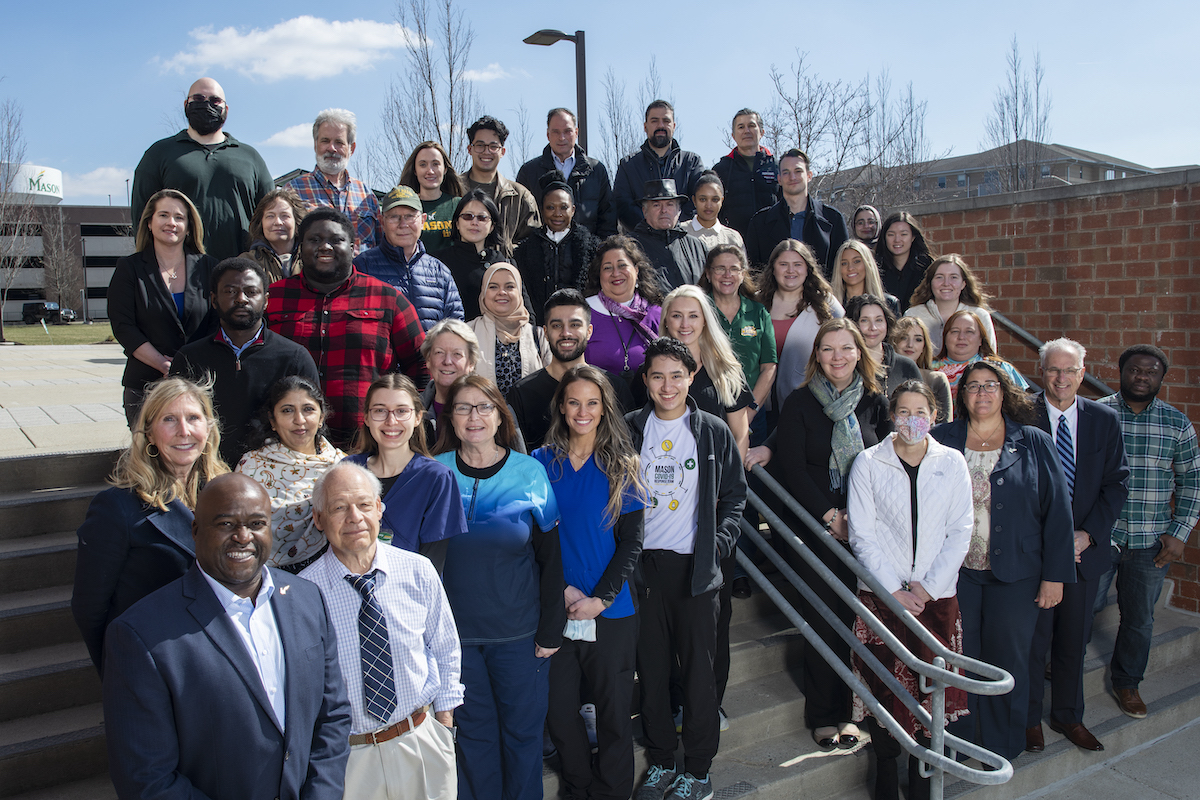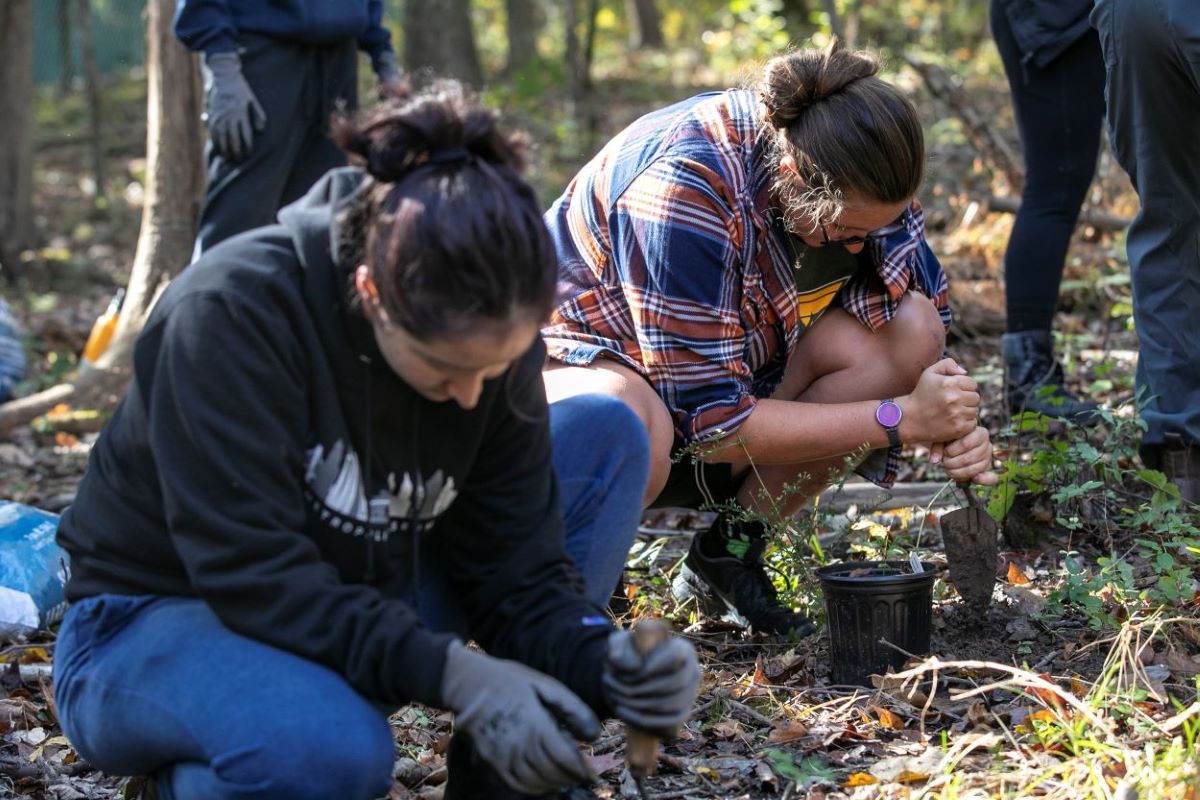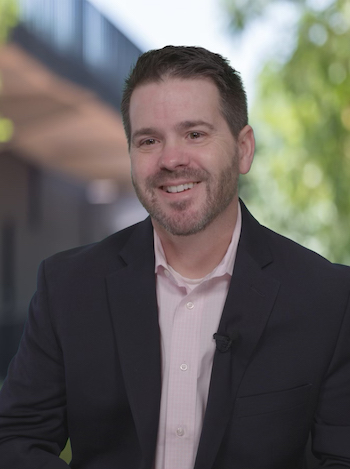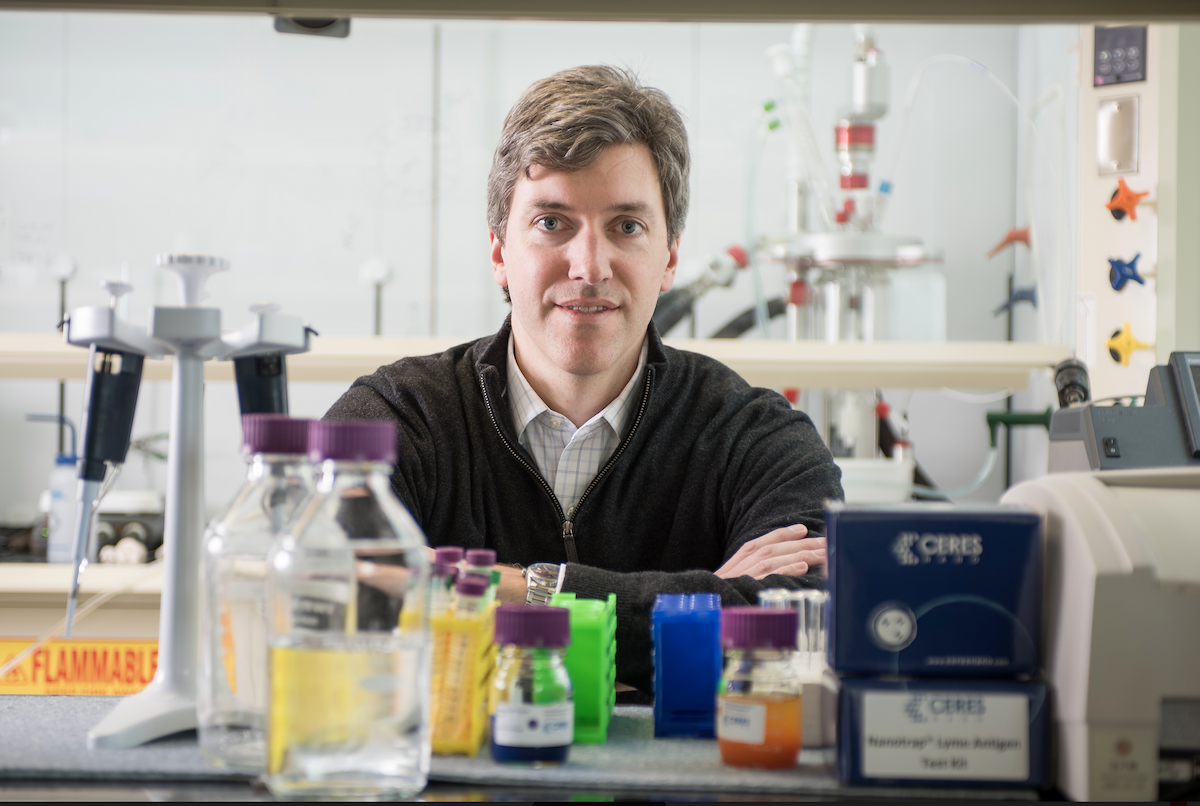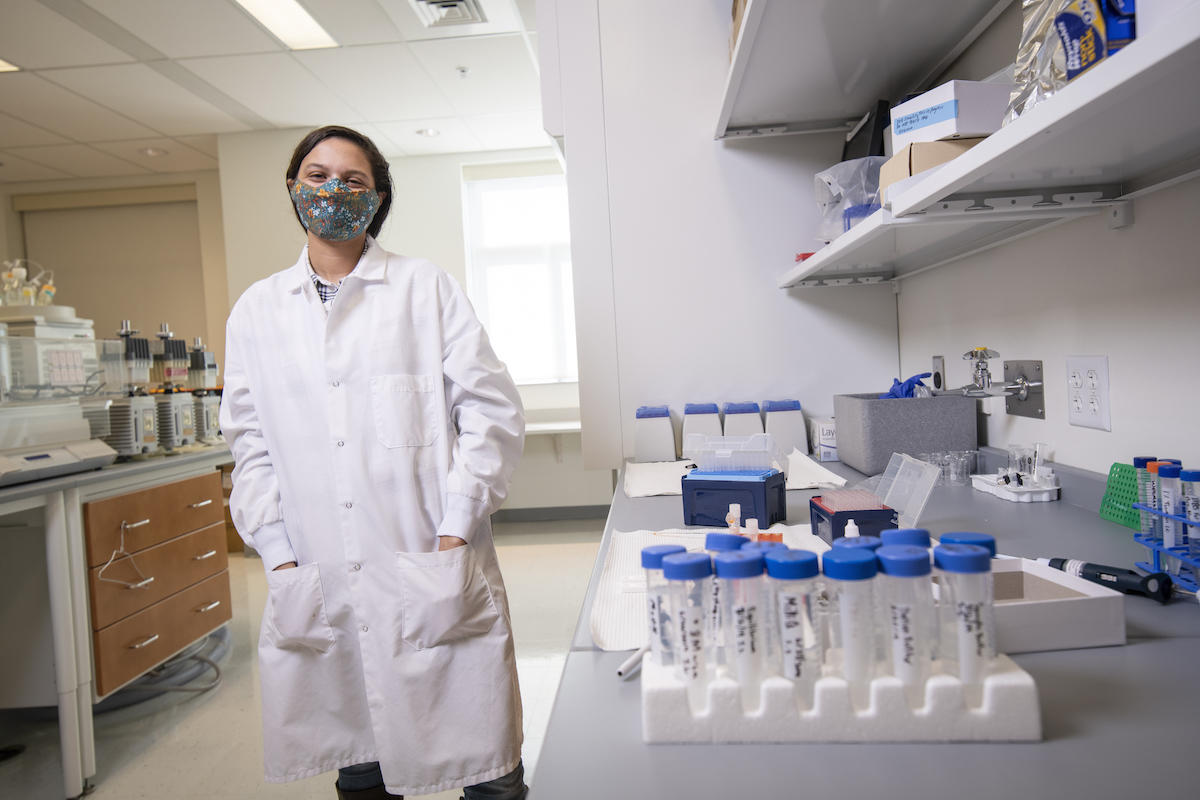Mason’s surveillance testing team honored for its efforts
John Hollis
Mon, 02/28/2022 – 15:46
Mason formally recognized the many dedicated scientists, first responders, program administrators and medical personnel whose tireless efforts paved the way for the school’s successful COVID-19 surveillance testing program during the global pandemic. Photo by Evan Cantwell/Creative Services
George Mason University officials on Monday formally recognized the many dedicated scientists, first responders, program administrators, staff and medical personnel whose tireless efforts paved the way for the school’s successful COVID-19 surveillance testing program during the global pandemic.
The reception in their honor at Merten Hall was Mason’s way of giving a heartfelt thanks for a job well done.
“I can give you all a thousand thank you’s,” said Mason President Gregory Washington. “And I know the reality is that it doesn’t happen if you all don’t make the commitment, if you all don’t put in the hard work, if you all don’t put in the extra hours, if you all don’t have to deal with the changing policies and the struggles that we were in many cases foisting upon you. But you did it, you did it admirably and your results are spectacular.”
Since the program’s inception in fall 2020, Mason has administered more than 155,000 COVID tests to students, faculty and staff. Processing the tests in Mason’s own labs means results are returned within 24 to 48 hours. The fast turnaround time meant Mason scientists could quickly identify and isolate positive COVID cases which lead to timely notification to those members of our community that needed to self-isolate to mitigate outbreaks within the Mason community.
The quick turnaround required immense time and staff power, key factors in helping keep the community safe while elevating Mason to national prominence for its response to the pandemic. The university’s ability to monitor the prevalence of COVID within the campus community and transmission rates played a key role in the decision to open its doors on time for fall 2021 and spring 2022 semesters.
Lance Liotta, the co-founder and co-director of the Center for Applied Proteomics and Molecular Medicine within Mason’s College of Science which oversaw the testing, called what his team accomplished “historic.” Liotta noted that his team conducted 1,000 thousand tests on Friday, Feb. 25, without a single positive case of COVID.
Carol Kissal, Mason’s senior vice president for administration and finance, lauded the team for their efforts that have served to inspire the entire Mason community.
“You have all been part of something that is pretty phenomenal,” she said.
The surveillance and diagnostic testing program started in the Ángel Cabrera Global Center parking garage in late August 2020, where staff overcame the elements and other unexpected technological hurdles to help Mason navigate the early stages of the COVID pandemic and COVID virus of which very little was known at the time. It wasn’t long before Mason’s COVID Response Team and scientists had devised new collection procedures at sites across all of Mason’s campuses, each aimed at keeping site staff and test participants safe through an efficient and expeditious testing process.
Mason’s reliable surveillance testing system is also critical in allowing Mason student-athletes to continue competing safely throughout the pandemic.

